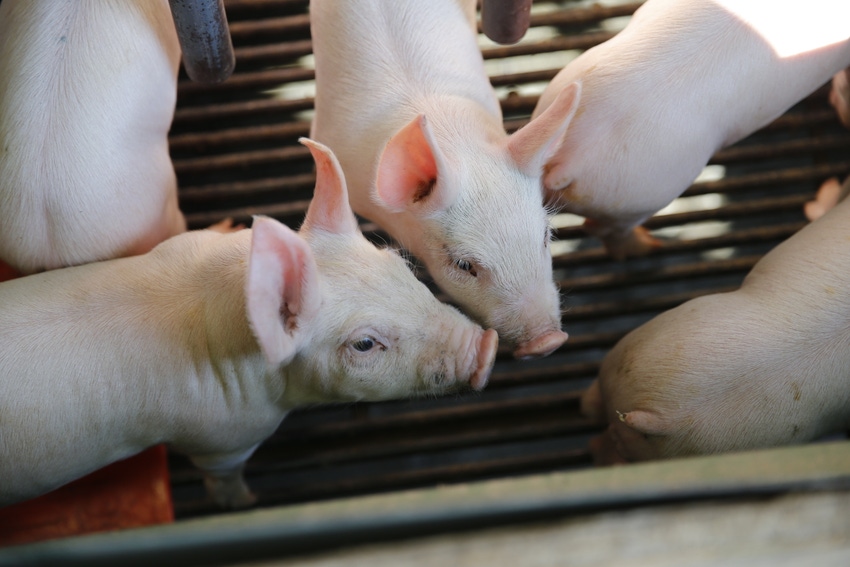In the full 2016 Progress Report, SHIC offers details of how it enhanced and coordinated global disease monitoring, targeted research investments and improved analysis and communication of swine health data, and how it made a difference in our country’s ability to prepare for and mitigate disease threats.
January 12, 2017

By Paul Sundberg, Swine Health Information Center Executive Director
Looking back at 2016, the Swine Health Information Center accomplished many things in its mission to protect and enhance the health of the U.S. swine herd. In the full 2016 Progress Report, SHIC offers details of how it enhanced and coordinated global disease monitoring, targeted research investments and improved analysis and communication of swine health data, and how it made a difference in our country’s ability to prepare for and mitigate disease threats.
Four keys to SHIC’s mission since its inception in 2015:
SHIC’s ability to fulfill its mission relies on its ability to focus on and successfully execute in four primary areas. These are preparedness, response, monitoring and analysis. These are areas that SHIC can complement, but not duplicate, the roles already played by USDA, the National Pork Board, National Pork Producers Council, the American Association of Swine Veterinarians, land-grant universities and related organizations. Collaboration and integration between all of these groups will continue to be critical for SHIC’s overall success.
Summary points of specific achievements in 2016 under each of the four main areas of SHIC’s activities include the following.
Preparedness
In 2016, SHIC research focused on the ability to detect the Swine Disease Matrix pathogens via nucleic acid detection, using platforms that are commonly available in the U.S. major veterinary diagnostic laboratories, such as PCR testing.
SHIC produced nine additional swine disease fact sheets, bringing the total to 33.
SHIC continues to fund a project that helps define disease introduction risks to the U.S. pork industry that come from importing feedstuffs and feed components. Preliminary results for Senecavirus A (surrogate for FMD), bovine viral diarrhea virus (surrogate for CSF) and bovine herpes virus-1 (surrogate for PRV) are completed and work continues on others.
SHIC started work to create a nationwide operational disease preparedness with the Rapid Response Corps project. The goal of this project is to develop a rapid response program for epidemiological investigations of emerging, transboundary and endemic swine diseases.
SHIC-funded Seneca Valley Virus research results were presented during three interactive webinars, which are now archived at swinehealth.org.
SHIC developed a program to help offset diagnostic fees for further investigation after the initial diagnostics are completed. A novel Sapelovirus, causing morbidity and mortality via CSN infection, was identified through this process. In another case, Pasivirus was detected by Next Generation Sequencing in sera samples.
Monitoring
SHIC has conducted a survey about swine diseases and related issues using the international network of the Monitoring and Analysis Working Group and got responses came from 13 foreign countries that highlighted international concern for PRRS, PEDV, influenza and others.
SHIC funded a project to help analyze the effectiveness of on-farm biosecurity practices using PRRS outbreaks as the indicator of biosecurity effectiveness. The evaluation will help U.S. pork producers to implement effective biosecurity and prevent outbreaks of emerging diseases.
The Monitoring and Analysis Working Group has reviewed and updated the Swine Disease Matrix content and the prioritization of the viruses. SHIC uses the Matrix to help focus its research and information on high-priority pathogens.
SHIC funded a pilot project investigating the use of Next Generation Deep Sequencing to survey imported feed components and other imported products. It determined that Next Generation Deep Sequencing was not successful in detecting some viruses spiked into some feed components. Work to identify ways to satisfactorily monitor imported products is continuing.
Analysis
SHIC is the primary source of funding for the veterinary diagnostic laboratories of Iowa State University, Kansas State University, University of Minnesota and South Dakota State University to work with Clemson University to standardize the way that they report their diagnostic laboratory swine testing results. When completed, the results of the project will be offered to the other veterinary diagnostic labs that do swine work for improved national coordination.
The Swine Health Monitoring Project currently involves approximately 40 percent of the sows in United States for monitoring economically important pathogens. A data management program is being developed to collect, collate, analyze and report data from various sources to create value for producers. In the short term, this project contributes to the control and prevention of important swine diseases. In the longer term, this builds the industry’s capacity for data collection, organization and capability to facilitate response to emerging pathogens.
SHIC has funded a project to determine whether oral fluids collected by hanging ropes in the holding pens of a contemporary U.S. abattoir can be effectively used for swine disease surveillance. Preliminary results are being evaluated.
Looking ahead
SHIC cannot prevent diseases from getting into the country and it is not, itself, a response plan. However, it is a tool to help the pork industry respond more quickly and efficiently to swine diseases. It will research the biggest existing threats to swine health that are already in Southeast Asia and elsewhere, so that the U.S. will be better prepared to respond to these diseases through better diagnostics and information. It also can give the industry a way to manage national swine health information to support international trade of U.S. pork products — an important aspect, especially during times of large domestic pork supplies.
The mission of the Swine Health Information Center is to protect and enhance the health of the United States swine herd through coordinated global disease monitoring, targeted research investments that minimize the impact of future disease threats, and analysis of swine health data. For more information, visit swinehealth.org or contact Paul Sundberg at [email protected].
You May Also Like



